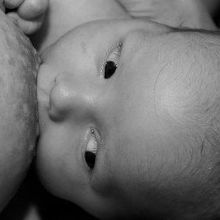Login
Subscribenewborn

Maternal Vaginal Fluids Mimic Microbe Transfer of Vaginal Birth
Alejandra Manjarrez, PhD | Jun 23, 2021 | 4 min read
Swabbing infants born by Cesarean-section with a gauze harboring their mother’s vaginal fluids made their skin and gut microbiota more closely resemble that of vaginally born babies.

COVID-19 Vaccines for Pregnant Moms May Protect Newborns
Catherine Shaffer | Feb 17, 2021 | 4 min read
A case study finds SARS-CoV-2 antibodies in placental cord blood after maternal vaccination.

Defining Rare Disorders: A Profile of Judith Hall
Anna Azvolinsky | Sep 1, 2019 | 8 min read
By bringing genetics into clinical medicine, the University of British Columbia medical geneticist helped to identify the gene mutations responsible for many rare diseases.

Southern White Rhino Born After Artificial Insemination
Nicoletta Lanese | Jul 31, 2019 | 2 min read
The successful delivery spells hope for the related northern white rhino, which is facing extinction.

Heel Prick, 1957
Ashley Yeager | Jul 15, 2019 | 3 min read
Robert Guthrie’s blood test for the metabolic disorder phenylketonuria launched a worldwide movement to screen every baby for the disease soon after birth.

Babies’ Genomes Identify Risks Overlooked by Newborn Screens
Abby Olena, PhD | Jan 3, 2019 | 4 min read
A trial called BabySeq, in which researchers performed genomic sequencing on 159 newborns, identified children susceptible to diseases that regular screening doesn’t look for.

The Child Hatchery, 1896
Catherine Offord | Mar 1, 2018 | 3 min read
The incubator exhibitions of the late 19th and early 20th centuries publicized the care of premature babies.

Study: Fracking Linked to Low Birth Weight in Newborns
Katarina Zimmer | Dec 14, 2017 | 2 min read
Scientist find that living near a hydraulic fracturing site for gas and oil extraction could have adverse effects on infant health.

Breast Milk Contributes Significantly to Babies' Bacteria
Ashley P. Taylor | May 10, 2017 | 2 min read
Thirty percent of bacteria found in babies' guts came from mothers' milk, a study finds.

Study: Babies’ Microbiomes Indifferent to Mode of Delivery
Kerry Grens | Jan 23, 2017 | 2 min read
Study of 81 six-week-olds who were born by C-section or vaginal delivery didn’t show differences in the structure or function of their microbiota, despite contrary results from other studies on babies.
